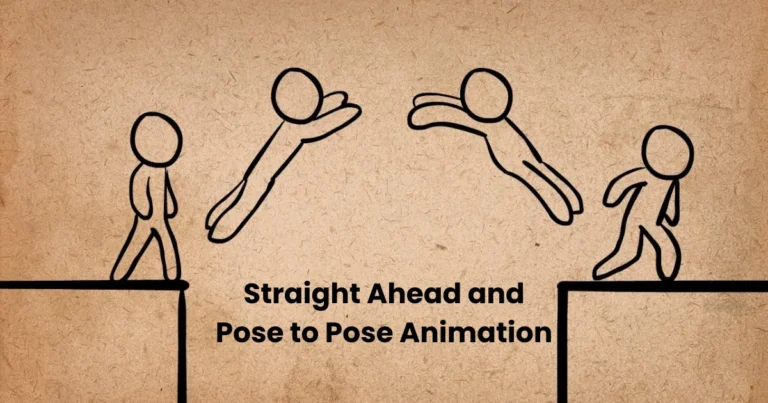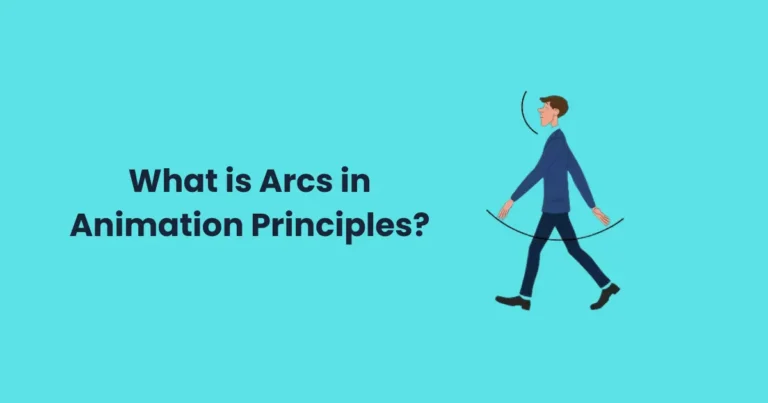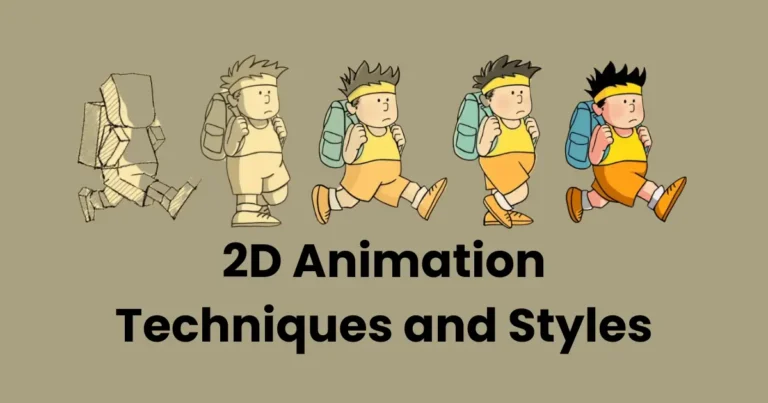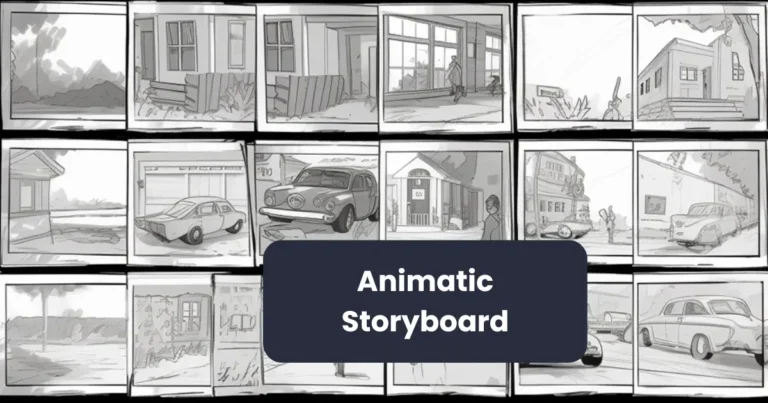Best Stop Motion Animation Ideas, you should try in 2025

Contents
Stop motion animation is a fascinating technique that has captured the imagination of audiences for over a century. This form of animation involves creating the illusion of movement by photographing objects or characters in small, incremental steps and then playing the images in sequence. Whether you’re a beginner or an experienced animator, stop motion animation offers endless creative possibilities, making it a popular choice for filmmakers, artists, and hobbyists alike.
From claymation to puppet-based storytelling, stop motion animation ideas allow creators to craft unique and visually captivating projects that stand out in the world of animation. By exploring different techniques and themes, animators can transform ordinary objects into dynamic, lifelike characters that tell compelling stories. In this article, we’ll dive into a variety of stop motion animation ideas that will help you unleash your creativity and bring your vision to life.
Why Stop Motion Animation is Popular
Stop motion animation has maintained its popularity for decades, and it’s easy to see why. This unique technique blends artistry, patience, and innovation, resulting in captivating visuals that continue to enchant audiences worldwide. Here are some key reasons why stop motion animation remains a favorite in both the animation industry and among independent creators:

- Tactile and Handmade Appeal
One of the major reasons for the popularity of stop motion animation is its tactile and handmade nature. Unlike digital animation, stop motion uses real-world objects or puppets, making the process feel more personal and authentic. The visible craftsmanship in each frame draws attention and adds a layer of charm and uniqueness that digital animation often lacks. - Endless Creative Possibilities
Stop motion animation offers endless creative possibilities for storytellers. Whether working with clay, paper, everyday objects, or elaborate set designs, animators can experiment with various materials to create highly imaginative and original content. This flexibility makes stop motion animation ideas incredibly versatile, appealing to a wide range of creators. - Nostalgic Charm
Stop motion animation has a nostalgic charm that harkens back to childhood favorites like The Nightmare Before Christmas and Wallace & Gromit. This sense of nostalgia helps foster a deep connection with viewers, making it a timeless form of entertainment that spans generations. - Engagement and Detail
Stop motion is known for its meticulous attention to detail, often requiring animators to make subtle, deliberate movements in each frame. This attention to detail is reflected in the fluidity and realism of the animations, which keep audiences engaged. The process may be time-consuming, but the results are always worth the effort.
Stop Motion Animation Ideas for Beginners
If you’re just starting with stop motion animation, it can feel overwhelming at first. However, with the right ideas and techniques, you can dive into this exciting world and create impressive animations with minimal experience. Below are some simple and creative stop motion animation ideas for beginners to help you get started on your animation journey:

1. Simple Object Movement
One of the easiest ways to begin experimenting with stop motion animation is by using simple everyday objects. Start by animating small items like pencils, coins, or buttons. Arrange the objects in different positions and take a photo after each movement. Playing back these frames will give the illusion of the objects moving. This idea is a great way to practice the basics of timing and frame composition while keeping the process simple and fun.
2. Claymation Characters
Claymation is one of the most popular forms of stop motion animation, and it’s a fantastic option for beginners. Using modeling clay, you can create basic characters or objects and animate them by making small changes to their position with each shot. This hands-on approach allows you to experiment with character design and movement while honing your animation skills. Claymation also provides endless creative possibilities, from facial expressions to intricate body movements.
3. Everyday Items in Action
Transform everyday household items into characters or objects that tell a story. For instance, you can use a pair of shoes to create a walking sequence or animate a cup that “magically” fills itself with water. This approach adds creativity to your animations and allows you to create compelling narratives with objects that people can easily relate to. Try incorporating everyday items into your stop motion animation ideas to make them more engaging and relatable for your audience.
4. Stop Motion with Paper Cutouts
Paper cutout animation is another beginner-friendly technique that’s easy to execute. You can create simple characters or backgrounds by cutting out shapes from colored paper and using them as moving elements within your animation. By layering and arranging these paper cutouts in various poses, you can create fluid movement and add a personal touch to your animation. This method works well for creating both 2D animations and more complex 3D scenes.
5. Animation with Food
Food-based stop motion animation is not only fun but also offers a creative way to make your animations stand out. You can animate items like fruits, vegetables, or even snacks to tell a story or showcase action. For example, imagine a piece of toast that gets buttered, or a strawberry that rolls across a table. Food offers a fun and engaging way to create charming animations that will grab viewers’ attention.
Creative Stop Motion Animation Ideas
Once you’re comfortable with the basics of stop motion animation, it’s time to take your creativity to the next level. Creative stop motion animation ideas allow you to experiment with different techniques, styles, and materials to craft unique and visually captivating stories. Below are some innovative ideas that will inspire you to push your artistic boundaries:

1. Paper Cutout Animations
Paper cutout animations are a classic and versatile method to create dynamic, 2D animations. You can craft characters, backgrounds, and even entire worlds from cutout paper shapes, giving your animation a distinctive look and feel. This technique is perfect for creating both minimalist and detailed designs. With a bit of imagination, you can build elaborate scenes that bring paper characters to life in an engaging and visually striking way.
2. Food-Based Stop Motion
Food-based stop motion animations are becoming increasingly popular for their whimsical charm and ability to tell creative stories using everyday ingredients. You can animate food items like fruits, snacks, and even candy, making them move, interact, or transform in fun ways. For instance, you could animate a sandwich being assembled, or fruits growing into a delicious smoothie. This idea adds a unique twist to stop motion and can attract a diverse audience.
3. Miniature Set Designs
Miniature stop motion animations are a fantastic way to create intricate worlds on a small scale. You can build detailed miniatures or dioramas, then animate them with careful frame-by-frame adjustments. These sets can range from tiny cities and landscapes to miniature rooms or objects. By focusing on scale and detail, you can create immersive environments that look larger than life, even in small spaces.
4. Mixed Media Animations
For a more experimental approach, you can combine various materials and media to create a mixed media stop motion animation. This could include a combination of live-action footage, digital effects, and traditional stop motion techniques. For example, you could animate a character made from paper, while incorporating digital elements like lighting or background effects. Mixing different artistic methods opens up a world of possibilities for unique visual storytelling.
5. Nature-Inspired Stop Motion
Nature is an endless source of inspiration for creative stop motion ideas. You can animate flowers blooming, leaves growing, or insects moving across the ground. For instance, you could make a stop motion animation about the life cycle of a plant, from seed to full-grown flower. Nature-based animations allow you to capture the beauty of the natural world and bring it to life through the stop motion technique.
Stop Motion Animation Ideas for Storytelling
Stop motion animation is a powerful storytelling tool that can bring your ideas to life in unique and engaging ways. By combining intricate animations with compelling narratives, stop motion can create emotionally resonant stories that captivate audiences. Whether you’re creating a short film, an advertisement, or a music video, here are some stop motion animation ideas for storytelling that will inspire you to craft memorable and impactful narratives:
1. Stop Motion Short Films
Creating a short film using stop motion animation allows you to develop a complete story arc in a condensed format. You can explore a wide range of genres—be it drama, comedy, fantasy, or horror—by using simple materials and props. For example, you might animate a clay character embarking on a journey, facing obstacles, and ultimately achieving a goal. Stop motion short films allow you to explore emotions and complex themes while keeping your animation process manageable as a beginner or advanced creator.
2. Stop Motion Music Videos
Stop motion animation is a popular medium for music videos due to its creative flexibility and ability to enhance the music’s tone and themes. Whether you’re working with a band or creating an animated video for your own music, stop motion can bring an extra layer of visual interest to the song. You could animate an abstract concept that mirrors the emotions in the song or tell a literal story that complements the lyrics. From surreal dreamscapes to narrative-driven visuals, stop motion music videos have the power to captivate viewers and leave a lasting impression.
3. Miniature Worlds and Fantastical Landscapes
One of the great benefits of stop motion animation is the ability to craft intricate miniature worlds. This technique is perfect for telling stories set in magical or fantastical realms. You could build a miniature forest, an alien planet, or a tiny city, and animate characters interacting within these environments. By creating detailed set designs and props, you can immerse your audience in a fully realized world that feels alive and tangible, heightening the storytelling experience.
4. Transformation Stories
Stop motion is ideal for illustrating transformation, as it allows for the gradual change of objects or characters over time. For example, you could animate a character evolving from one form to another, such as a caterpillar turning into a butterfly, or a person changing into an entirely different being. This type of storytelling is highly effective for conveying themes of growth, change, or metamorphosis. The gradual progression of transformation in stop motion animation can evoke a powerful emotional response from the audience.
5. Object-Based Storytelling
Object-based stop motion animation is a fantastic way to tell a story using everyday items. You can breathe life into inanimate objects by giving them personalities, motives, and actions. For instance, you could animate a cup that wants to be filled with coffee or a pair of shoes that go on an adventure. Object-based storytelling allows you to use simple items in creative ways to tell a larger narrative, often with humor or whimsy. This approach is not only accessible for beginners but also offers endless creative possibilities.
6. Stop Motion Narratives with Puppets
Puppets have long been a staple in stop motion animation, especially for telling stories with characters that feel tangible and expressive. Whether you craft your own puppets or use pre-made ones, this approach allows for highly detailed character animation. You can create a story with multiple characters, each with unique personalities and movements. Puppetry can add a layer of charm and personality to your storytelling, from simple, comedic skits to more complex, emotional narratives.
Advanced Stop Motion Animation Ideas
Once you’ve mastered the basics of stop motion animation, it’s time to push your creative limits and experiment with more advanced techniques. Advanced stop motion ideas allow you to create visually stunning and technically sophisticated animations, incorporating various materials, effects, and storytelling methods. If you’re looking to elevate your stop motion skills, here are some ideas that will challenge you and inspire your next project:
1. Mixed Media Stop Motion Animation
Mixed media animation involves combining different materials, textures, and techniques to create a rich and dynamic animation. You can combine stop motion with live-action footage, digital effects, or 2D animation to create a seamless blend of styles. For example, you could animate paper cutouts alongside live-action shots of an actor or integrate digital backgrounds into a miniature set. Mixed media opens up countless possibilities, allowing you to create complex, visually layered animations that stand out.
2. Puppetry with Complex Mechanisms
While puppet-based stop motion is a classic technique, adding advanced mechanisms to your puppets can create even more impressive results. Using rigs, wires, and internal structures, you can give your puppets the ability to perform more sophisticated movements. For instance, animating a puppet with movable facial expressions, retractable limbs, or realistic eye movement adds an extra layer of realism and fluidity to your animation. This technique requires a deep understanding of both stop motion and puppet fabrication but can result in highly polished and lifelike performances.
3. Integration of CGI and Practical Effects
Incorporating computer-generated imagery (CGI) with stop motion animation allows you to create jaw-dropping visuals that blend traditional animation with modern technology. You could animate practical stop motion characters or objects and then use CGI to enhance their environments, add particle effects, or create supernatural elements. For instance, you might use CGI to generate explosions or realistic weather effects, while maintaining the tactile look and feel of stop motion. This hybrid approach gives you the best of both worlds—authenticity and cinematic spectacle.
4. Advanced Lighting and Cinematic Techniques
To take your stop motion animation to the next level, experiment with lighting and cinematography techniques that elevate the visual appeal of your project. Play with shadows, highlights, and colored lighting to create mood, depth, and atmosphere. Advanced lighting setups—like backlighting, spotlights, or multiple light sources—can dramatically change the tone of your animation, making it feel more cinematic. Additionally, using camera movement and varying focal lengths can give your stop motion project a polished, professional look.
5. Stop Motion with Realistic Textures
One of the most powerful ways to enhance the visual impact of your stop motion animation is by focusing on realistic textures. By using highly detailed materials such as fabric, wood, or metal, you can create lifelike environments and characters. For instance, animating a character with intricate fabric clothing or textures that respond to light and movement can add depth and believability. Realistic textures also make your stop motion more engaging, drawing the viewer’s eye to the fine details and creating a more immersive experience.
6. Multilayered Storytelling
In advanced stop motion, storytelling becomes a crucial part of your project’s success. Rather than relying solely on action, try incorporating multilayered storytelling techniques. This could include parallel narratives, intricate visual metaphors, or symbolic imagery woven throughout the animation. Advanced stop motion allows you to tell more complex stories with deeper meanings by layering visual elements and narrative threads. This technique can add a thought-provoking dimension to your animation, appealing to audiences who enjoy detailed, multi-layered storytelling.
How to Add Special Effects to Stop Motion Animations
Stop motion animation is a captivating medium that allows animators to create unique and tangible worlds, but adding special effects can elevate the impact of your animation. Special effects (SFX) can enhance the atmosphere, amplify emotions, and provide additional realism or fantasy to your scenes. Whether you’re looking to add digital effects, practical effects, or a combination of both, here’s how to seamlessly integrate special effects into your stop motion animation.

1. Practical Effects with In-Camera Techniques
Practical effects, also known as in-camera effects, involve capturing effects directly through your camera and physical elements without relying on post-production editing. Here are a few practical special effects you can achieve while shooting:
- Smoke and Fog: Use dry ice, a smoke machine, or even cotton balls to create smoke effects. You can animate these elements by slowly moving them into different positions between frames to simulate rising or swirling smoke.
- Water and Liquids: To create the illusion of liquid pouring, splashing, or dripping, use materials like clear gels or glycerin. For example, you can use a syringe to drip liquid in small increments and animate each drop.
- Fire Effects: Using orange and red paper cutouts or colored gels, you can simulate flames. By moving the shapes slightly in each frame, you can create a flickering flame effect. For more complex fire simulations, try layering translucent materials to create movement in the flames.
- Particles and Dust: To create the illusion of dust or small particles, you can use substances like flour or baby powder. A fan or even slight puffs from a can of compressed air can be used to make the particles move in a believable way.
2. Using Stop Motion Animation Software for Special Effects
While practical effects can achieve impressive results, stop motion animation software can be a powerful tool for adding more polished special effects in post-production. Here are a few techniques you can incorporate with software:
- Compositing: With software like Dragonframe or After Effects, you can combine multiple layers of footage to create more complex effects. For example, you could composite a character moving across a fiery background or integrate a digitally animated explosion into a stop motion scene.
- Green Screen Effects: Use a green or blue screen to film characters and objects, and later replace the background with any animated or live-action footage. This technique is ideal for placing stop motion characters in fantastical environments that would be too difficult to create physically.
- Motion Blur: Adding motion blur in post-production can make your animation look more fluid and dynamic. When an object or character moves quickly, applying a motion blur effect will simulate a smoother, faster action, making the movement more natural.
3. Layering Digital Effects
Sometimes, combining practical and digital effects produces the best results. After filming the stop motion frames, you can add digital effects to enhance the visuals. Some examples include:
- Lighting Effects: Digital lighting effects can be used to simulate lightning strikes, glowing objects, or dynamic light sources that would be hard to achieve with physical lights. Tools like After Effects can also be used to create light flickers or glowing elements that interact with your stop motion characters.
- Particle Systems: Programs like After Effects offer particle simulation tools that allow you to generate effects like sparks, snow, rain, or even magical dust. These can be animated to interact with your stop motion characters, adding an extra layer of realism or fantasy.
- Text and Titles: You can add animated text, logos, or titles over your stop motion scenes. This is especially useful for adding credits or visual elements that appear during the animation. Text effects like typewriter or fading can also add a sense of movement or time passing within your stop motion.
4. Creating Shadow and Light Effects
Lighting plays a crucial role in stop motion animation, and manipulating it creatively can add stunning visual effects to your animation. Here’s how to use shadows and light for special effects:
- Projected Shadows: By positioning light sources in different ways, you can cast dramatic shadows that add depth to your animation. For example, moving a light source during the animation to create shifting shadows can add a sense of movement or foreboding atmosphere.
- Color Grading: In post-production, you can adjust the color balance of your stop motion animation to create a specific tone or atmosphere. Whether you want a cool, eerie feel or a warm, nostalgic look, color grading can help establish the mood of your scene.
- Light Trails: You can create light trails or streaks using long-exposure photography or in digital editing. This effect is especially useful for fast-moving objects or characters, giving them a sense of speed or motion.
5. Sound Effects to Enhance the Experience
While not technically a “visual” effect, sound effects are an essential part of any stop motion animation. Adding sound can significantly enhance the impact of your special effects. Here’s how sound works in tandem with visual effects:
- Matching Sound to Action: Use sound effects that correspond to your visual effects. For instance, if you animate a character walking through fire, adding crackling fire sound effects can make the scene feel more immersive.
- Creating Atmosphere: Background sounds like wind, water, or crowd noise can complement your visual effects and add to the overall atmosphere of your animation. Layering multiple sound effects can make the environment feel more alive.
- Sound Design for Effects: Custom sound design can be used to match unique effects like glowing, mechanical movements, or magical actions. Crafting sounds that blend seamlessly with your visual effects enhances the believability of your stop motion animation.
Conclusion
Stop motion animation is a versatile and creative medium that offers endless possibilities for storytelling and visual effects. Whether you’re a beginner looking for simple ideas or an advanced animator exploring complex techniques, there’s always room to experiment and push your boundaries. From practical effects like smoke and fire to digital effects such as compositing and particle systems, adding special effects to your stop motion animation can enhance its emotional impact and visual appeal. By combining in-camera techniques, advanced software, and clever use of light, sound, and textures, you can elevate your animations to a whole new level.
Whether you’re creating a short film, music video, or just exploring your creative potential, these stop motion animation ideas and special effects techniques will help you produce unique and captivating projects. Embrace the world of stop motion and let your imagination run wild, as the possibilities for creativity are limitless.
Remember, the key to success in stop motion animation is patience, attention to detail, and a willingness to experiment. So start planning your next stop motion project today, and take your animations from simple to spectacular!






